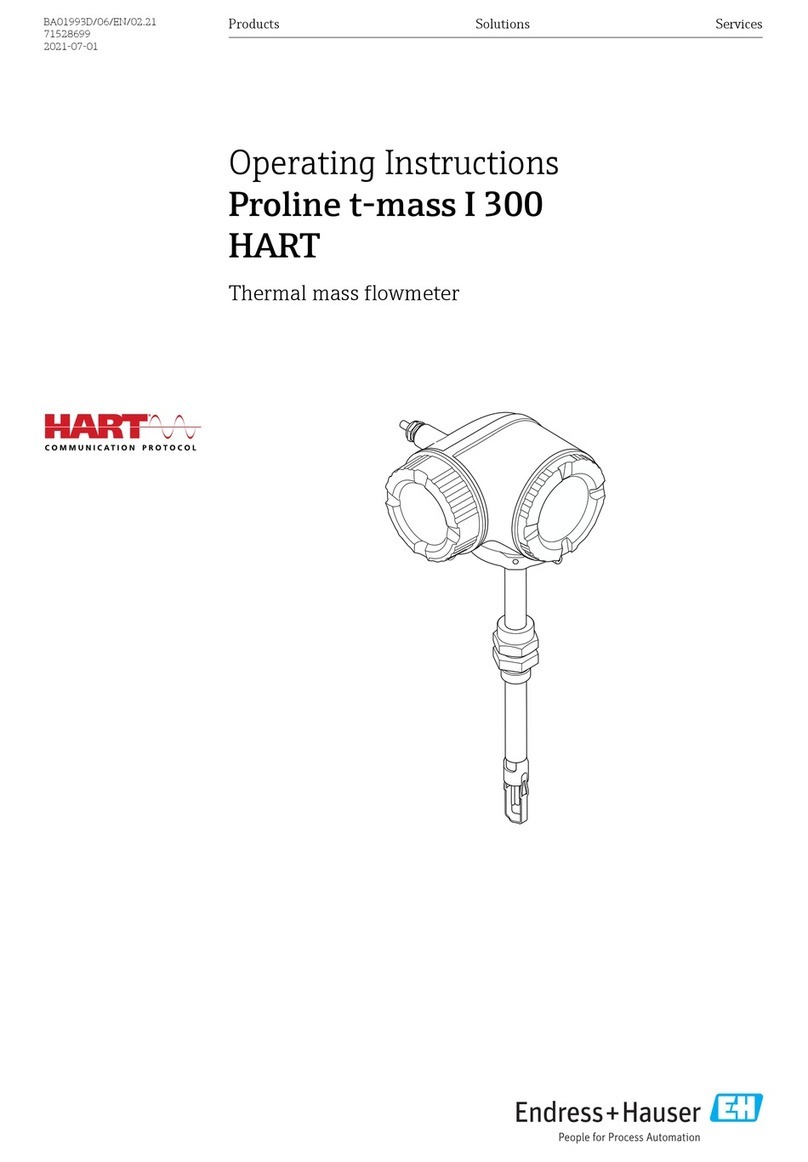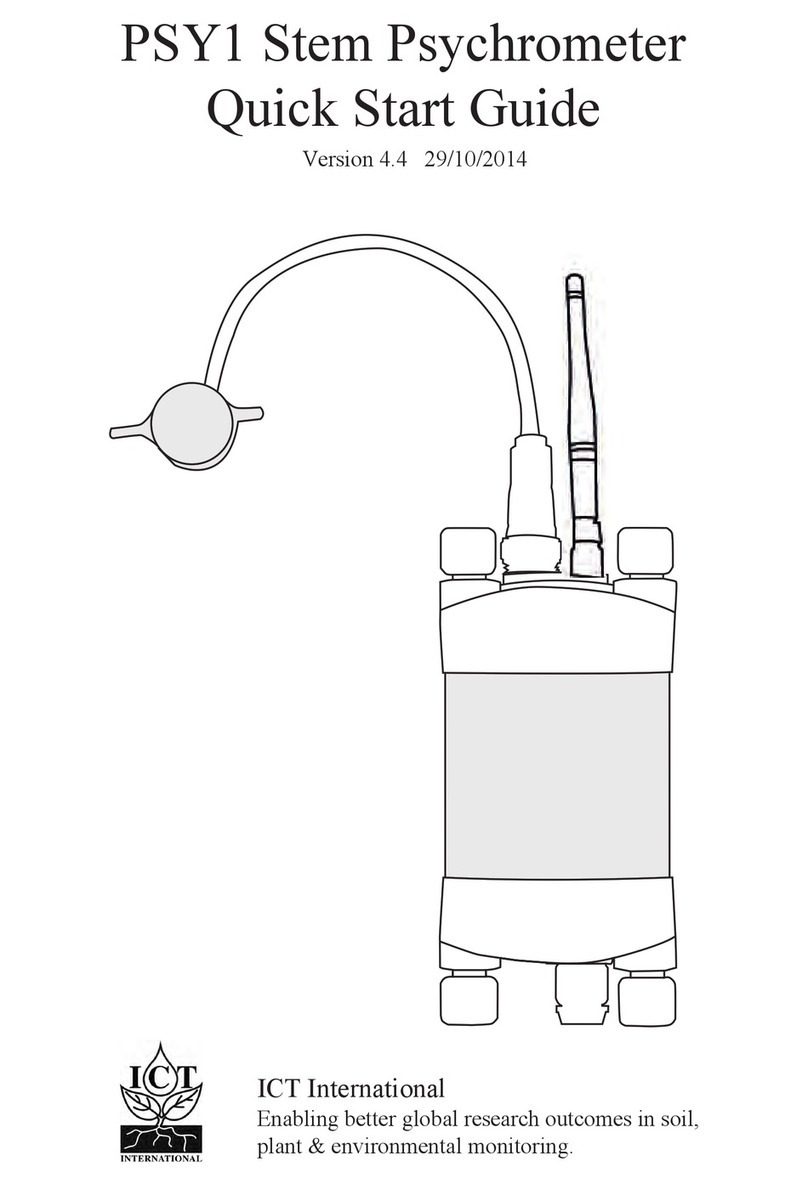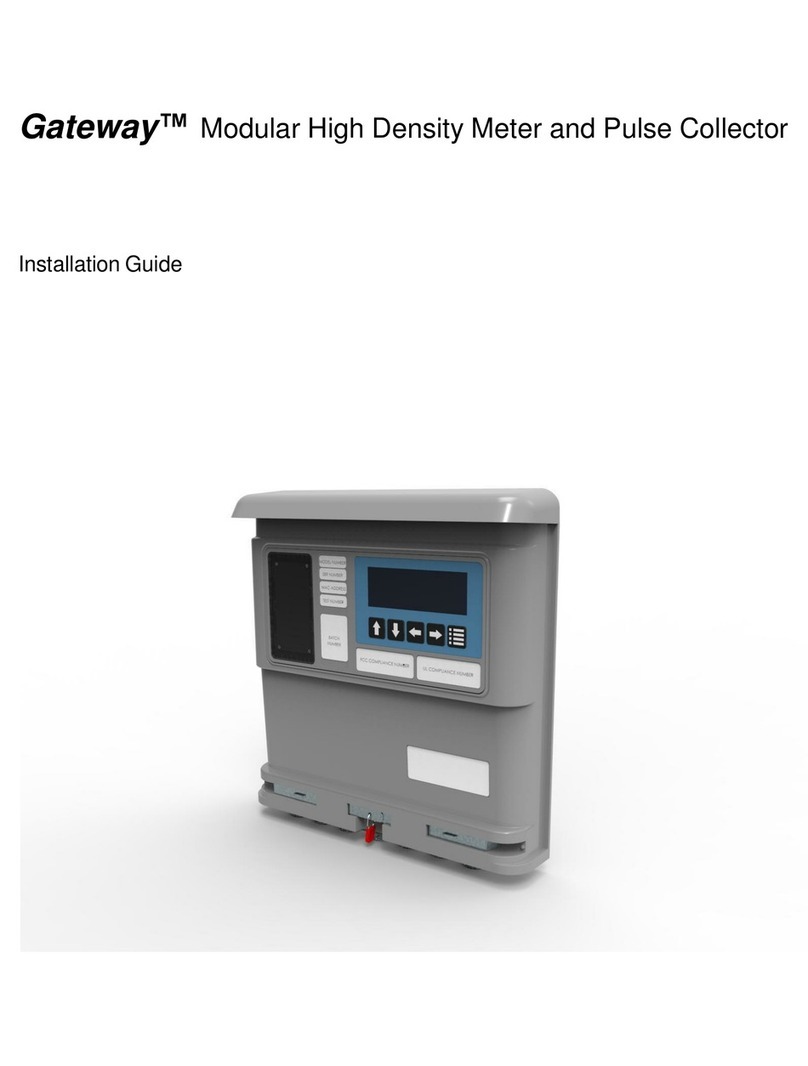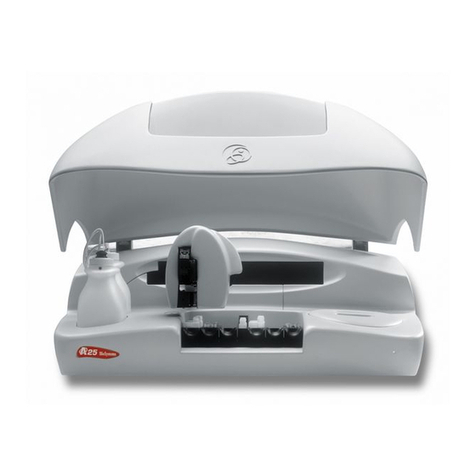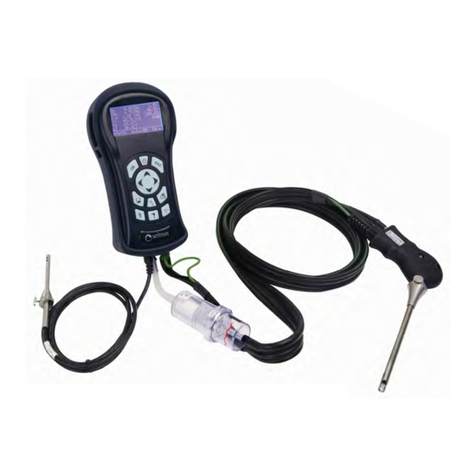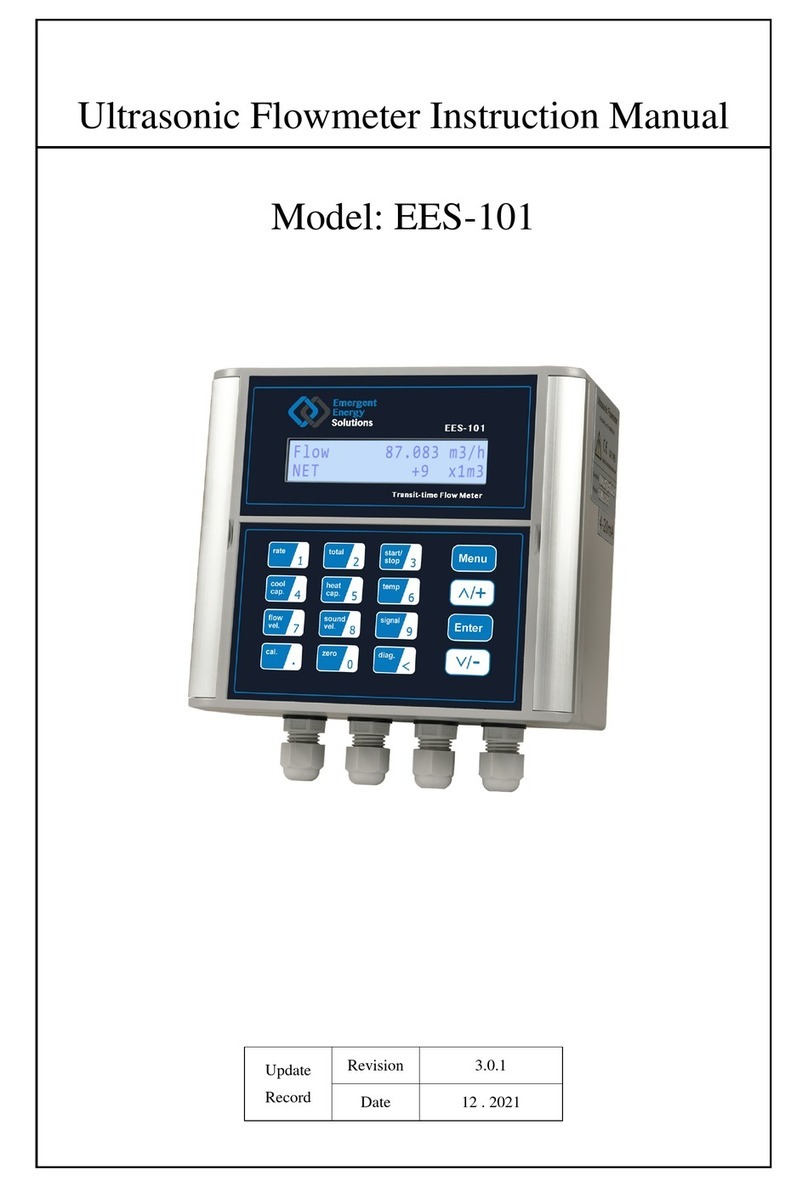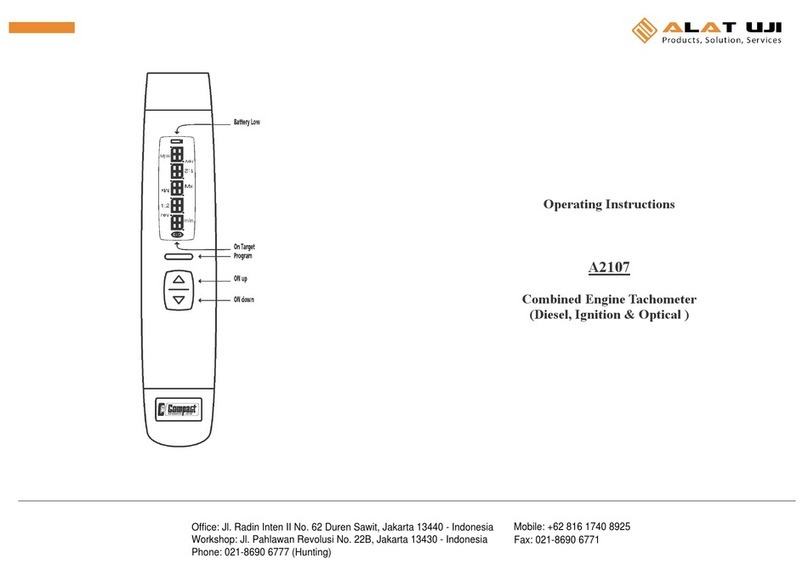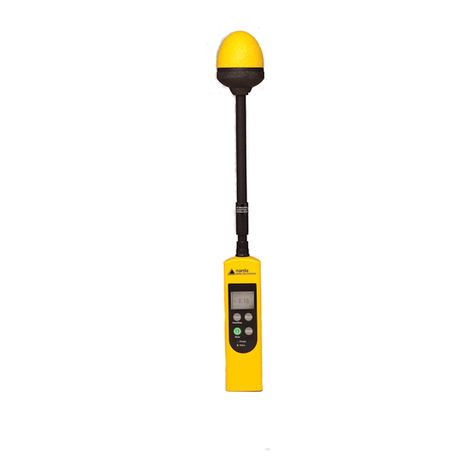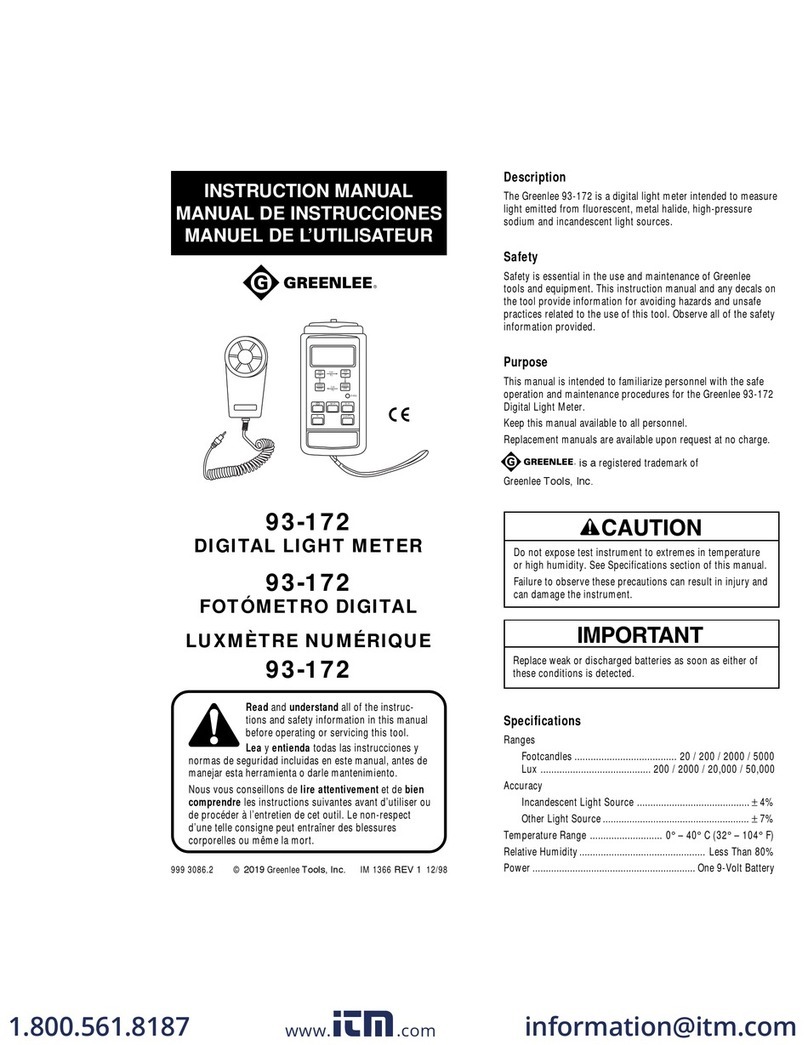Ronan X96S Parts list manual

Instructions
and
Operating Manual
X96S
Level with Density
Compensation Gage
60%
Ronan Engineering
Process Setup
Filtering
Low Alarm
High Alarm
Rad Disc
Linearization
Density Comp
Auto Calibrate

i
Table of Contents
OVERVIEW.........................................................................................................................3
Advantages.................................................................... 3
Gamma's Advantages..................................................................................................................................................... 3
X96S Advantages........................................................................................................................................................... 3
BASIC CONCEPTS ............................................................................................................4
Communications................................................................ 4
4-20 MA......................................................................................................................................................................... 4
HART............................................................................................................................................................................. 4
Variables..................................................................... 4
Communication Variables.............................................................................................................................................. 4
Device Variables............................................................................................................................................................ 5
Configuration Variables................................................................................................................................................. 5
THEORY .............................................................................................................................6
Theory of Radiation Gaging.................................................... 6
Principles of Operation....................................................... 7
PASSWORD.......................................................................................................................8
MENUS/OPERATION.........................................................................................................9
Variables Menu............................................................................................................................................................ 16
Variable Mapping Menu .......................................................................................................................................... 16
Displays Menu ............................................................................................................................................................. 16
Status Display Menu .................................................................................................................................................... 17
Configuration Menu..................................................................................................................................................... 18
Operation Menu ....................................................................................................................................................... 18
Level Filter Menu................................................................................................................................................. 19
Density Filter Menu ............................................................................................................................................. 20
Rad.Disc Config Menu ........................................................................................................................................ 21
Dens.Comp Config............................................................................................................................................... 22
Detector Fault....................................................................................................................................................... 22
Linearization Menu .............................................................................................................................................. 22
Config Linearize Menu .................................................................................................................................... 23
Scan Time Menu ...................................................................................................................................................... 23
Level Config Menu .................................................................................................................................................. 23
Density Config Menu............................................................................................................................................... 23
Comp.Ratio Menu.................................................................................................................................................... 24
Head Temp Config Menu......................................................................................................................................... 24
Alarms...................................................................................................................................................................... 24
Hardware Menu ....................................................................................................................................................... 25
System Hardware Menu....................................................................................................................................... 25
Source Type Menu ............................................................................................................................................... 26
Usr Def Source Menu....................................................................................................................................... 26
Analog Out Config Menu..................................................................................................................................... 26
Hart Output Menu ................................................................................................................................................ 26
Detector Menu...................................................................................................................................................... 26

ii
HART Menu ............................................................................................................................................................ 27
System Menu ........................................................................................................................................................... 27
Digital Outputs Menu......................................................... 28
Relay Menus ................................................................................................................................................................ 28
TTL Menus .................................................................................................................................................................. 29
Digital Inputs Menu.......................................................... 30
Input Menus ................................................................................................................................................................. 30
Auto Cal Menu................................................................ 31
Auto Cal Setup Menu................................................................................................................................................... 31
Auto Cal Configuration Menu ................................................................................................................................. 32
Calibration Menu............................................................. 33
Calibrate Level Menu................................................................................................................................................... 33
Calibrate Dens Menu ................................................................................................................................................... 35
Loop Config Menu....................................................................................................................................................... 36
Aux Loop Cfg Menu.................................................................................................................................................... 36
Diagnostic................................................................... 36
Level ............................................................................................................................................................................ 36
Density ......................................................................................................................................................................... 37
Rad.Disc....................................................................................................................................................................... 37
Alarms.......................................................................................................................................................................... 38
CONFIGURATION............................................................................................................39
DETECTOR ......................................................................................................................40
Scintillator Detector........................................................ 40
ION Chamber.................................................................. 42
ELECTRONICS ................................................................................................................47
X96-2001PL................................................................... 47
X96-2002PL................................................................... 47
X96-2003PL................................................................... 47
X96-2004PL................................................................... 47
X96-2007PL................................................................... 47
X96-2008PL................................................................... 48
X96-2009PL................................................................... 48
OPTIONS..........................................................................................................................49
X96S Mechanical Chassis Part Numbers......................................... 49
X96S Electronic Module Part Numbers.......................................... 49
REGULATIONS................................................................................................................50
DRAWINGS ......................................................................................................................51

3
Overview
The X96S is a family of measurement products that is intended to replace the current X96N and X99
product families. These products:
•use nuclear measurement techniques,
•support all features of the current X96N and X99 products,
•support up to 32 scintillation or ionization detectors,
•optional HART interface,
•improved user interface options1,
•more user functionality, and
•more product flexibility.
Advantages
•Mounts External to Existing Vessels
•Displays in Customer Units
•Most Applications can be solved with low-energy sources
•Not affected by:
-extreme temperatures
-caustic processes
-sterile processes
Gamma's Advantages
•Mounts external to pipe or vessel (no components exposed to process material)
•Passes through process material
•Does not make material radioactive
•Does not change the material
•Can be shielded by lead
X96S Advantages
•HART Communications
•Identical interface on local display as via HART
•Custom configuration of display
•Surface, panel or rack mount available
•Field mountable
•Push button calibration
1This includes the ability to have a simple or complex user interface, a remote user interface, or even no
user interface.

4
Basic Concepts
Communications
The Ronan X96S Level gage provides both 4-20 mA current loop and HART communications.
4-20 MA
For many years, the field communication standard for process automation equipment has been a 4-20 mA
current loop signal. The current varies in proportion to the process variable being represented. In typical
applications, a signal of 4mA will correspond to the lower limit (0%) of the calibrated range and 20mA will
correspond to the upper limit (100%) of the calibrated range. Thus, if the system is calibrated for 1 to 3
feet, then an analog current of 12mA (50% of range) will correspond to a level of 2 feet.
HART
HARTField Communications Protocol extends the 4-20mA current loop standard to enhance
communication with smart field instruments. The HART protocol was designed specifically for use with
intelligent measurement and control instruments which traditionally communicate using 4-20mA analog
signals. HART preserves the 4-20mA signal and enables two-way digital communications to occur without
disturbing the integrity of the 4-20mA signal. Unlike other digital communication technologies, the HART
protocol maintains compatibility with existing 4-20mA systems, and in doing so, provides users with a
backward compatible solution. HART Communication Protocol is well established as the "de facto"
industry standard for digitally enhanced 4-20mA field communication.
The enhanced communications capability of intelligent field instruments employing the HART protocol,
offers significantly greater functionality and improved performance over traditional 4-20mA analog
devices. The HART protocol permits the process variable to continue to be transmitted by the 4-20mA
analog signal and additional information pertaining to other variable, parameters, device configuration,
calibration, and device diagnostics to be transmitted digitally at the same time. Thus, a wealth of additional
information related to plant operation is available to central control or monitoring systems through HART
communications.
Variables
There are two types of variables, communications variables and device variables.
Communication Variables
HART defines four device variables, PV (Primary Variable), SV (Secondary Variable), TV (Tertiary), and
QV (Quaternary). PV is assigned to the primary 4-20 ma loop . HART is also communicated over this loop.
SV is assigned to an optional secondary 4-20 ma loop.

5
Device Variables
The Ronan X96S Level with Density Compensation gage has 6 device variables:
Device Variable Value
Level Level
Density Density
Uncomp.Level Uncompensated Level
Density Comp Density Compensation
Head Temp Head Temperature
Not Assigned Not Assigned
Configuration Variables
The Ronan X96S Level with Density Compensation gage has many configuration variables that are
accessed through its menus.

6
Theory
Theory of Radiation Gaging
Radiation gages operate on the principle of radiation absorption and transmission.
A beam of gamma radiation is directed from the source holder, through the vessel and its process material,
and onto the surface of the detector.
Radiation which is not absorbed by the material through which it passes, is transmitted to the surface of the
detector.
Process measurement is possible because the amount of radiation absorbed and transmitted is predictable.
The absorbed radiation is directly related to the level of process material in the vessel while the transmitted
radiation is inversely related to the level of process material in the vessel.
Therefore, an increased process level results in a decrease of transmitted radiation.
Since the radiation that's not being absorbed is being transmitted, the process level can be inferred by
measuring the amount of radiation reaching the detector at any point in time. The detector's output signal,
in counts, also varies inversely to the process level.
When the process level is low the detector is exposed to a maximum amount of radiation which produces a
HIGH output of counts. When the process level is high the process material "shields" the detector and
prevents radiation from reaching the detector, producing a LOW output of counts.
The X96S Microprocessor converts the detector signal to user's measurement units of level: m, mm, cm,
in, ft.
The X96S displays the output measurement range in the selected user units. The "zero" of the
measurement range represents the lowest level of interest, while the "span" of the measurement range
represents the highest level of interest.
Reduction of the signal "noise" due to radiation statistics is handled in the stage of signal processing known
as digital filtering. Digital filtering is a form of statistical averaging used to smooth, or dampen, random
radiation as well as process-related noise. Increasing the digital filter’s “time constant” decreases signal
noise.
Dynamic tracking permits the gage response to temporarily by-pass the digital filter. This is helpful in
some processes where sudden or drastic step changes in process must be observed in their true, or
unfiltered, state.
Software also compensates for the decay of the radioactive source activity. On-going adjustments are made
automatically for the rate of decay, or source half-life.

7
Principles of Operation
The detector's raw output signal is processed through several stages of software in the X96S.
Some of the more significant stages of signal processing are:
•Units Conversion – conversion of counts into user-selected level units
•Measurement Range – 4-20 mA output defined by the user-selected range in user-selected units.
•Digital Filtering – signal smoothing to reduce statistical radiation noise
•Dynamic Tracking – quick gage response to quick process changes.
•Source Decay Compensation – automatic compensation for the radioisotope decay
•Calibration (Referencing) – calibration of gage to user process.
The Calibration (or Referencing) procedure relates detector output (in counts) to numeric values that
accurately represent the actual process level.
The level algorithm used by the X96S software is a simple transfer function. That is, the relationship
between the detector output and the process level is mathematically expressed as:
()
×
−
+= −
−
0
0
0
0LL
II
II
LLevel f
f
Where:
If= detector signal with calibrate (full) level (Lf) in vessel
Io = detector signal with reference (low) level (L0) in vessel
I = current detector signal
L0= level @ reference (low level)
Lf= level @ calibration (high level)

8
Password
Notice:
To access the Programming Menu, the Password is 101010.
Step 1: Power Up – You should now be on the Status Screen.
Step 2: Press F3 to go back.
Step 3: Now enter the password. (All digits are set at 000000 at this point.)
Press to get the digit to be # one
Press 2 times (The third digit should be highlighted.)
Press to get the digit to be # one
Press 2 times (The fifth digit should be highlighted.)
Press to get the digit to be # one
Press F4 (enter)
Note: If the wrong password was entered, press F1 (ALL0) to set all the digits to
the number 0 and you can begin re-entering the password from the beginning.
Pressing F2 (RST0) will set the individual digit that is highlighted back to the
number 0.
Note: For security reasons, each digit will always be displayed as an asterisk.

9
_____________________________
Menus/Operation
The Ronan X96S Level with Density Compensation Gage uses a tree structured menu system.
Ronan X96S–Level,Den Comp
Variables Variables Variable Mapping
Status Displays
Configuration Variable Mapping PV is [var mapped to PV]
Digital Outputs Level [value units] SV is [var mapped to SV]
Digital Inputs Uncomp.Level[value units] TV is [var mapped to TV]
Auto Cal Density [value units] QV is [var mapped to TV]
Calibration Dens.comp[value units]
Diagnostic Head temp [value units] (P,S,T,Q)V is
Raw Counts [value units]
Filt Counts[value units] Level
Density
Uncomp.Level
Density Comp
Status Display Head Temp
Not Assigned
Analog Bar [enable/disable]
Line 1: [var] Line (number)
Line 2: [var]
Line 3: [var] Level
Line 4: [var] Density
Line 5: [var] Uncomp.Level
Line 6: [var] Density Comp
Line 7: [var] Head Temp
Line 8: [var] 4-20 mA
Raw Cnts
Filt.Cnts
Date & Time
Diagnostics
Not Assigned
ROOT, VARIABLE AND DISPLAY MENUS

10
Configuration Level Filter
Operation Operation Type RC, Ist order
Level Config Dyn Track [enable]
Density Config Level Filter Sigma [number]
Comp.Ratio Dens.Filter Fast TC [seconds]
Head Temp Config Rad.Disc Config Fast Counter [number]
Alarms Dens.Comp Config Medium TC [seconds]
Hardware Detector Fault Slow Counter [number]
Hart Linearization Slow TC [seconds]
Systems Scan Time [ms] Noise Filter [number]
Monitor [status]
Level Config
Dens.Filter
Units (ft m in cm mm)
Low Range [number] Type RC, Ist order
High Range [number] Dyn Track [enable]
Sigma [number]
Density Config Fast TC [seconds]
Fast Counter [number]
Density Units SGU Medium TC [seconds]
Low Range [number] Slow Counter [number]
High Range [number] Slow TC [seconds]
Noise Filter [number]
Comp.Ratio Monitor [status]
Low Range [number] Rad.Disc Config
High Range [number]
Mode [disabled]
Head Temp Config Intern Rad Discr
Extern Rad Discr
Temp Units [degree C]
Low Range [degrees] Extern Rad Discr
High Range [degrees]
Filt. Constant
Low Sigma
Low Sigma Cntr
High Sigma
High Sigma Cntr
Surge Clamp
Intern Rad Discr
Min Fault Cnts
Max Fault Cnts
Dens.Comp Config
Enabled
Comp Type [High Phase]
Min Ratio [number]
Max Ratio [number]
Ratio Factor X [number
Detector Fault
Min Counts [number]
Max Counts [number]
Linearization
Linearize [disable]
Clear Table
Config Linearize
Table entry [value]
Entry used
Measured [inches]
Actual [inches]
Set entry
Remove Entry
CONFIGURATION MENU

11
Configuration Alarm[number]
Alarms
Operation Source [variable]
Level Config Alarm 1 Alarm Type [none,low,high, range]
Density Config Alarm 2 Setpoint [number]
Comp.Ratio Alarm 3 Setpoint2 [number]
Head Temp Config Alarm 4 Hysterisis [percentage]
Alarms Alarm 5
Hardware Alarm 6 Source
Hart Alarm 7
Systems Alarm 8 Level
Alarm on 4-20mA Density
Dens.Comp
Uncomp.Level
HeadTemp
Filtered Counts
Alarm on 4-20mA
Overrange
Underrange
Overrange
Freeze
System Hardware
Hardware CPU
Slot 1 Details
System Hardware DIO
Source Type Slot 2 Details
Analog Out Config Slot 3
HART output Ser.po Slot 3 Details
Detectors Slot 4
Slot 4 Details
Slot 5
Slot 5 Details
Slot 6
Slot 6 Details
Slot 7
Slot 7 Details
Slot 8
Slot 8 Details
Display
Display Details
HART
HART DB Details
Source Type
Usr Def Source (Source Type)
Next Reference (Date)
Next Wipe Test (Date)
Next Shutter Test (Date)
Analog Out Config
Loop 1 (PV)
Loop 2 (SV)
Loop 3 (TV)
Pwr Src (Internal/External)
Loop () ()V
X96S-2005
X96S-2004, chan 1
X96S-2004, chan 2
None
HART output
None
X96S-2005
CONFIGURATION MENU Ser.port 1

12
Configuration Detectors
Hardware
Operation Card 2 Func
Level Config System Hardware Card 3 Func
Density Config Source Type Card 4 Func
Comp.Ratio Analog Out Config Card 5 Func
Head Temp Config HART output Ser.po Card 6 Func
Alarms Detectors Card 7 Func
Hardware Card 8 Func
Hart
Systems Hart Card () Func
Tag Name (Name) Autocal1
MultiDrop (Number) Autocal2
Univ Rev (Number) Autocal3
Spec Rev (Number) Autocal4
Autocal5
System Autocal6
Autocal7
Serial # Autocal8
Hardware Rev Level
Software Dens.Comp
Date Rad.Disc
Hour
Minute
Password
Date/Time Format
CONFIGURATION MENU

13
Digital Outputs Output
Output Relay 1
Select Sources Relay 2
Polarity Relay 3
Relay 4
TTL 1
TTL 2
TTL 3
TTL 4
Select Sources
Alarm 1 [yes/no]
Alarm 2 [yes/no]
Alarm 3 [yes/no]
Alarm 4 [yes/no]
Alarm 5 [yes/no]
Alarm 6 [yes/no]
Alarm 7 [yes/no]
Alarm 8 [yes/no]
Auto Cal Ref [yes/no]
Auto Cal Err [yes/no]
Ref Prompt [yes/no]
Wipe Test [yes/no]
Shutter Test [yes/no]
Empty Clamp [yes/no]
Detector Flt [yes/no]
System Alarm [yes/no]
Rad. Alarm [yes/no]
Polarity
Digital Inputs
NO/Not Driven
Polarity [high/low] NC/Driven
Polarity [high/low] Open/Not Driven
Polarity [high/low] Closed/Driven
Polarity [high/low]
Polarity [high/low]
Polarity [high/low]
Polarity [high/low]
Polarity [high/low]
DIGITAL OUTPUT AND INPUT MENUS

14
Auto Cal Setup Auto Cal [number]
Auto Cal
Auto Cal 1 Auto Cal [state]
Auto Cal Setup Auto Cal 2 [Disable, Enable, Suspend]
Auto Cal Status Auto Cal 3 Type Manual
AC Filter [seconds] Auto Cal 4 [sensor rise, sensor fall, both]
G. Auto Delay [secs] Auto Cal 5 State Disabled
Next Auto Time [secs] Auto Cal 6 Level [inches]
Ref.Time [secs] Auto Cal 7 Trigg. Delay [seconds]
Auto Cal 8 Source [DI1 – DI8]
Curr. Cnts
Auto Cal Status Threshold [number]
Capt. Cnts
State Proc. Lo Cnts [number]
[Disabled, Enabled, Suspend] Proc. Hi Cnts [number]
Calibration
Calibrate Level
Calibrate Level Low Ref Level
Calibrate Dens State [state]
Loop Config Low Ref Level Ref Level [inches]
Aux Loop Cfg High Cal Level Ref Cap
Ref Mode
Ref Time [seconds] High Cal Level
MinRefCnt [number]
Backgr. Counts [number] Cal Level [inches]
Last Ref.Date Cal Cap
Last Ref.Time
Clear Ref / Cal Ref Mode
Empty
Calibrate Density Process
Absorber
State [state]
Low Ref Dens Low Ref Dens
High Cal Dens
Backgr. Counts [number] Ref Density [SGU]
High Fault [number] Ref Cap
Low Fault [number]
Clear Ref / Cal Calibrate
Loop Config Calibr Density [SGU]
Cal Cap
PV [variable] 1/uT [value]
Loop Test
Damping [number] Variable is
D/A Trim
Level
Density
Aux Loop Cfg Uncomp. Level
Head Temp
SV [variable] Not Assigned
Aux 1 Test
Aux 1 Trim
TV [variable]
Aux 2 Test
Aux 2 Trim
CALIBRATION MENUS

15
Diagnostic Level
Level Raw Counts
Density Filter Counts
Rad. Disc Ref Date
Alarms Ref Level
Cal Level
Ref Cap
Cal Cap
Dens.Comp.Capt
Density
Raw Dens Cnts
Filter Cnts
Ref Cap
Cal Cap
Ref Density [SGU]
Calibr Density [SGU]
1/uT
Rad. Disc.
Rad Disc Cnts
Filt. Disc Cnts
Alarms
Sys. Alarm
Det. Fault
Auto Cal Ref
Auto Cal Error
Ref. Prompt
Wipe Test
Shutter Test
Rad. Discr
Alarms
Outputs
DIAGNOSTIC MENU

16
The root menu is titled “Ronan X96S – Level”. It contains the following items:
ITEM FUNCTION
Variables Selecting this choice takes the user to the Variables menu
Status Display Selecting this choice takes the user to the Displays menu
Configuration Selecting this choice takes the user to the Configuration menu
Digital Outputs Selecting this choice takes the user to the Digital Outputs menu
Digital Inputs Selecting this choice takes the user to the Digital Inputs menu
Auto Cal Selecting this choice takes the user to the Auto Cal menu
Calibration Selecting this choice takes the user to the Calibration menu
Diagnostic Selecting this choice takes the user to the Diagnostic menu
Variables Menu
The menu titled “Variables” contains the following items:
ITEM FUNCTION
Variable Mapping Selecting this choice takes the user to the Variable Mapping menu
Level Shows the current value of the Level Variable
Uncomp.Level Shows the current value of the Uncomp.Level Variable
Density Shows the current value of the Density Variable
Comp.Ratio Shows the current value of the Comp.Ratio Variable
Head Temp Shows the current value of Head Temp (the Head Temperature)
Raw Counts Shows the current value of the Raw Counts Variable
Filt.Counts Shows the current value of the Filt.Counts Variable
Variable Mapping Menu
The “Variable Mapping” menu allows the user to select the device variable to be mapped to PV, SV,
TV, and QV. It contains the following items:
ITEM FUNCTION
PV is Shows the device variable assigned to PV and allows the user to change the selection
SV is Shows the device variable assigned to SV and allows the user to change the selection
TV is Shows the device variable assigned to TV and allows the user to change the selection
QV is Shows the device variable assigned to QV and allows the user to change the selection
Each PV, SV, TV, and QV may each select one of the following:
SELECTION MEANING
Level Level
Density Density
Uncomp.Level Uncompensated Level
Density Comp Density Compensation
Head Temp Head temperature (if available)
Not Assigned Blank line
Displays Menu
The menu titled “Displays” contains the following item:
ITEM FUNCTION
Status Display Selecting this choice takes the user to the Status Display menu

17
Status Display Menu
The Status Display menu is used to configure the device status display. It contains the following
items
ITEM FUNCTION
Analog Bar Shows the current state of the analog bar display (enabled or disabled) and allows the
user change the state.
Line 1: Shows the data to be displayed on line 1 of the status display and allows the user to
change the selection
Line 2: Shows the data to be displayed on line 2 of the status display and allows the user to
change the selection
Line 3: Shows the data to be displayed on line 3 of the status display and allows the user to
change the selection
Line 4: Shows the data to be displayed on line 4 of the status display and allows the user to
change the selection
Line 5: Shows the data to be displayed on line 5 of the status display and allows the user to
change the selection
Line 6: Shows the data to be displayed on line 6 of the status display and allows the user to
change the selection
Line 7: Shows the data to be displayed on line 7 of the status display and allows the user to
change the selection
Line 8: Shows the data to be displayed on line 8 of the status display and allows the user to
change the selection
Each line may each select one of the following:
SELECTION MEANING
Level Level
Density Density
Uncomp.Level Uncompensated Level
Density Comp Density Compensation
Head Temp Head temperature (if available)
4-20 mA 4-20 mA output level
Raw Raw counts (from scintillation detector) or raw analog measurement (from ionization
detector
Filt.Cnts Filter Counts
Date & Time Current date and time
Diagnostic Diagnostic
Not Assigned Blank line

18
Configuration Menu
The Variables menu is used to access area configuration menus. It contains the following items:
ITEM FUNCTION
Operation Selecting this choice takes the user to the Operation menu
Level Config Selecting this choice takes the user to the Level Config menu
Density Config Selecting this choice takes the user to the Density Config menu
Comp.Ratio Selecting this choice takes the user to the Comp.Ratio menu
Head Temp Config Selecting this choice takes the user to the Head Temp Config menu
Alarms Selecting this choice takes the user to the Alarm menu
Hardware Selecting this choice takes the user to the Hardware menu
HART Selecting this choice takes the user to the HART menu
System Selecting this choice takes the user to the System menu
Operation Menu
The Operation menu is used to access the menus and variables that control the processing of the level
data. It contains the following items:
ITEM FUNCTION
Level Filter Selecting this choice takes the user to the Level Filter menu
Dens.Filter Selecting this choice takes the user to the Dens.Filter menu
Rad.Disc Config Selecting this choice takes the user to the Rad.Disc Config menu
Dens.Comp Config Selecting this choice takes the user to the Dens.Comp Config menu
Detector Fault Selecting this choice takes the user to the Detector Fault menu
Linearization Selecting this choice takes the user to the Linearization menu
Scan Time Shows the amount of time to accumulate each level sample and allows the user to
change the time value.

19
Level Filter Menu
The Level Filter menu is used to configure the parameters associated with the weight measurement
filter. It contains the following items:
ITEM FUNCTION
Type Shows the type of filtering averaging the system is using (RC, 1st order, Walking avg)
Dyn Track Shows the current state of the dynamic tracking filter (enabled or disabled) and allows
the user to change the state. If disabled the filter uses only the Slow Time Constant.
Sigma Shows the (sigma) multiplier used to determine maximum number of raw counts
variation (for scintillation) or raw analog value (for ion chamber) that the input can
vary from the current filtered counts before changing to the dynamic filter. Sigma is
the square root of the current filtered counts. Also allows user to change this number.
Fast TC Fast Time Constant value to be used when the Fast Counter reaches zero.
Fast Counter Shows the fast count down counter value. If gauge has been in dynamic tracking long
enough to be using Medium filter and the raw counts continued to exceed the sigma
value, the fast counter value is decreased each consecutive scan. The Fast counter
value resets and returns back to the original value if the raw counts do not continue to
exceed the sigma value. Once the Fast TC is triggered, it will continue to be used until
the counts are within the sigma value for the Fast counter number of times
consecutively. Also allows user to change this number.
Medium TC Medium Time Constant value to be used when the Slow Counter reaches zero.
Slow Counter Shows the slow count down counter value. If gauge is in dynamic tracking, and the
raw counts continued to exceed the sigma value, the slow counter value is decreased
each consecutive scan. The Slow counter value resets and returns back to the original
value if the raw counts do not continue to exceed the sigma value. Also allows user to
change this number.
Slow TC Slow Time Constant value to be used if the the Slow Counter has not reached zero.
Noise Filter Shows the maximum number of potentially erroneous measurements in a row to
bridge before deciding that a step change has occurred in the weight value. Also it
allows user to change this number. Erroneous measurement is define when the raw
signal is 4 times the pre-selected sigma multiplier by the user.
Monitor Shows the current state of the filtering mechanism.
Monitor (filter state) one of the following:
Monitor MEANING
ERROR Filter is not initialized (this state should not occur during normal operation of the
X96S Weigh Scale)
FILL The slow filter buffer is filling.
TRACK The (slow or medium or fast filter buffer is filled and the filter is tracking changes in
the weight value
REFILL A step change has occurred and the walking average buffer is refilling.
Table of contents
Popular Measuring Instrument manuals by other brands

Anemoment
Anemoment TriSonica Mini user manual
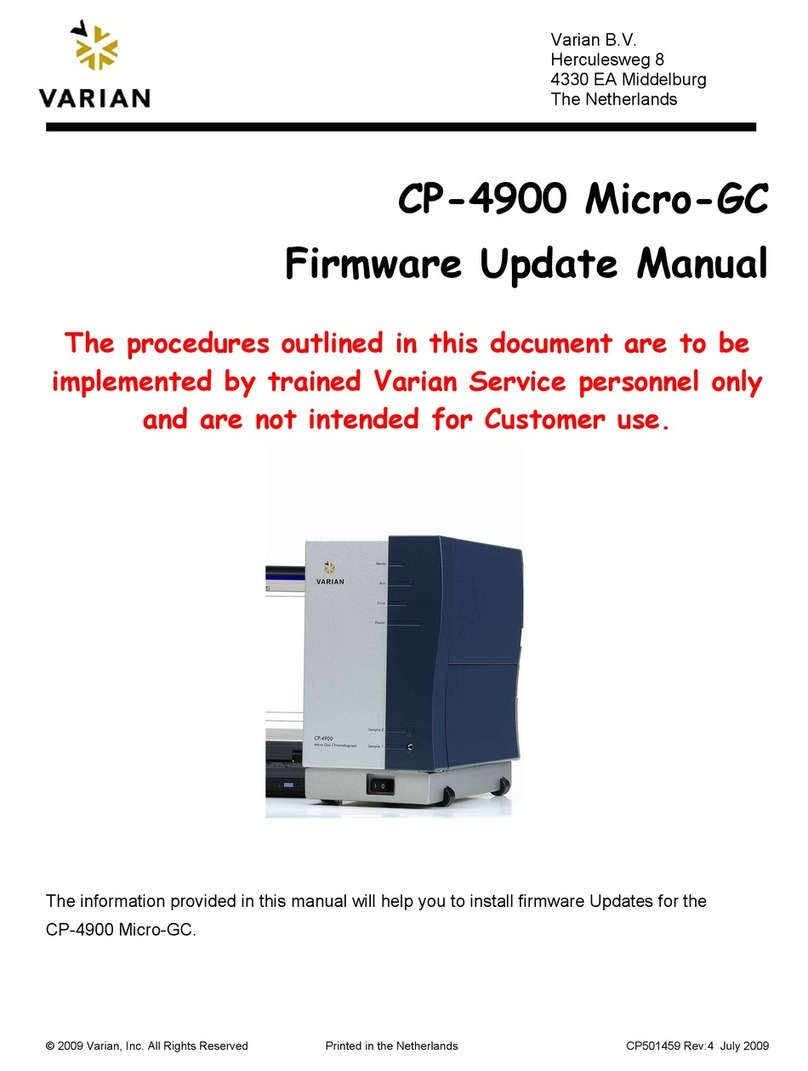
Varian
Varian CP-4900 Micro-GC Firmware update manual
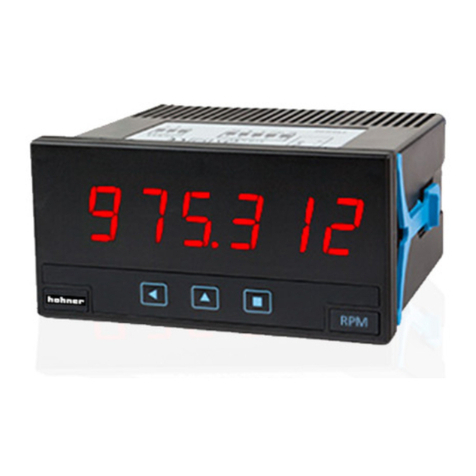
Hohner Automaticos
Hohner Automaticos VI96 Operation manual

Tonghui
Tonghui U822 Operation manual
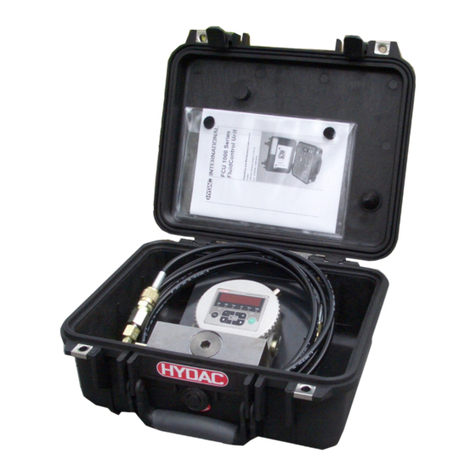
HYDAC International
HYDAC International FMMP Operating and maintenance instructions
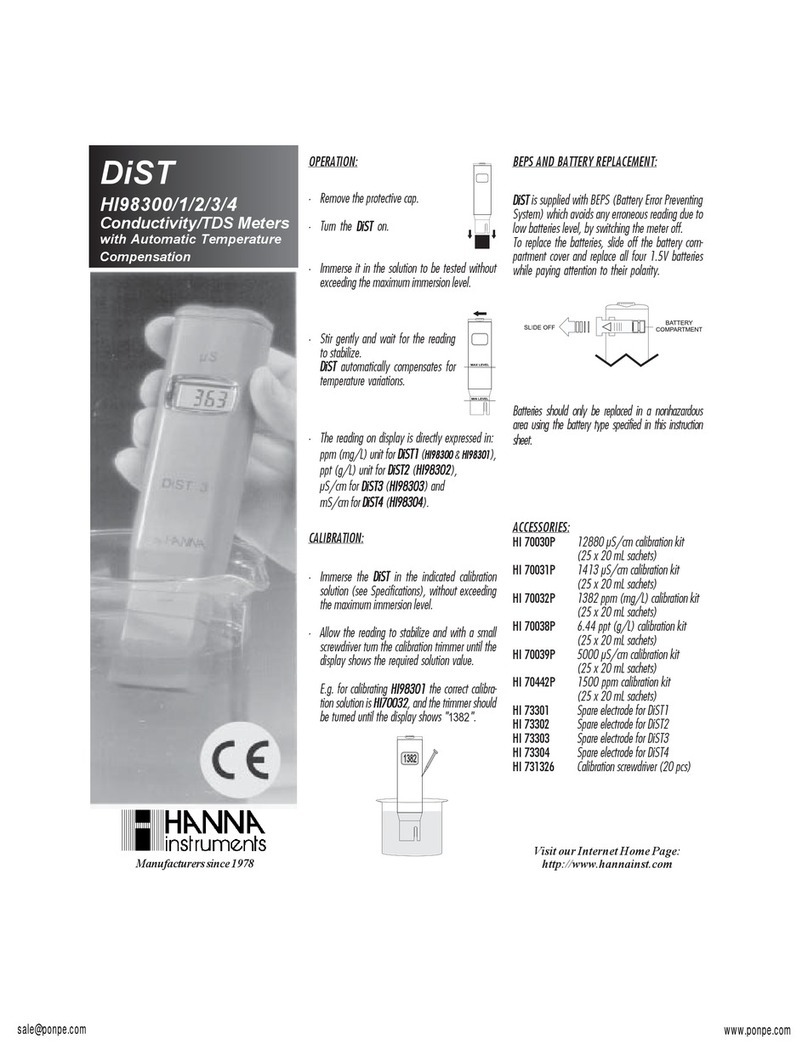
Hanna Instruments
Hanna Instruments DiST HI 98302 quick start guide

